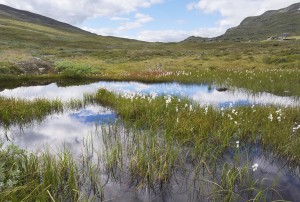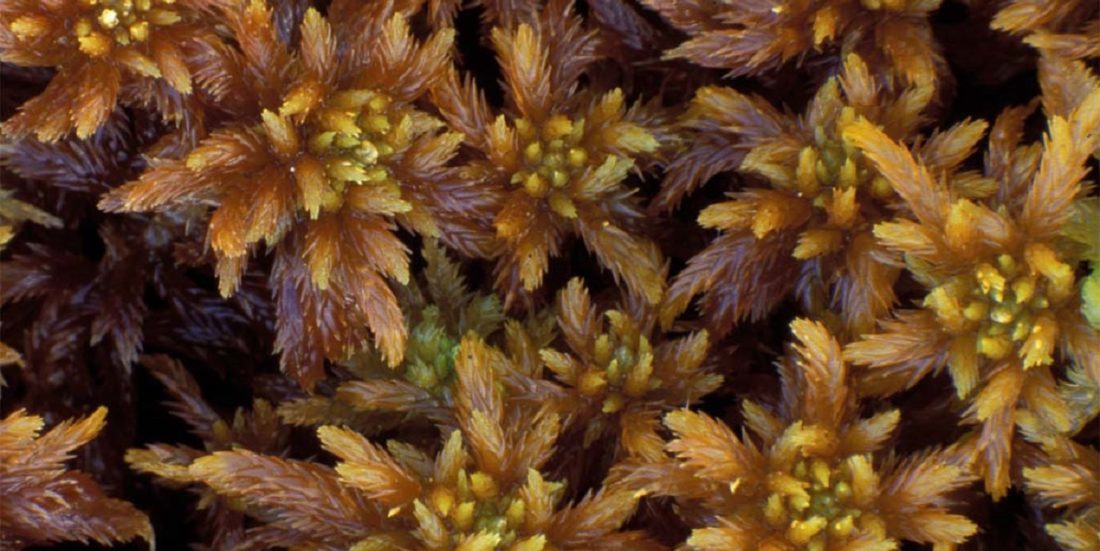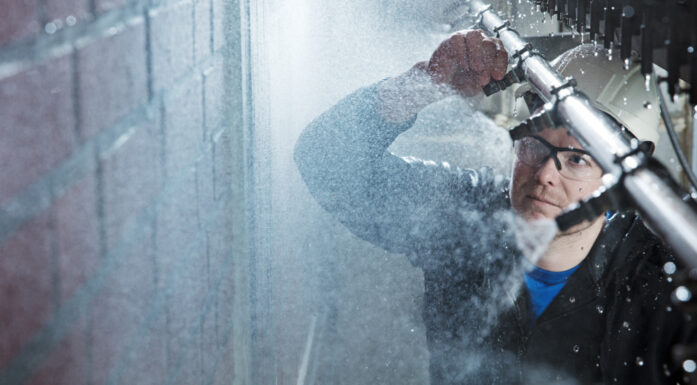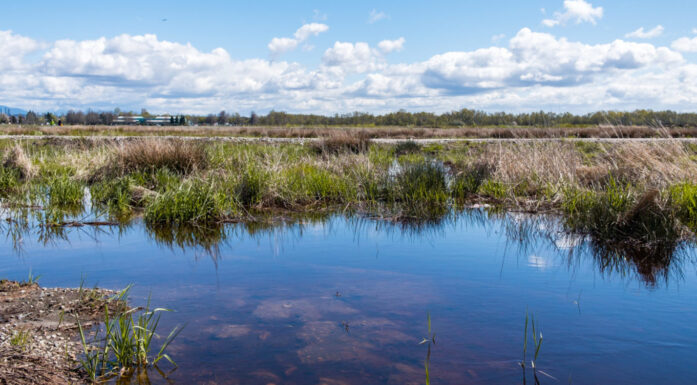Peat moss – the bane for our existence
Where peat moss takes over in a northern lawn, it strangles almost all of its grassy neighbours. Nevertheless, there are good reasons to take care of peat moss.
GLOBAL WARMING – The temperature balance on Earth may be dependent on a conspicuous creation that sours life for everyone around, guzzles more than a sponge and produces lots of offspring that behave likewise. And you thought your neighbours were bad.
“No plant genus is more important as a carbon balance on Earth than peat mosses. Peat stores at least a third of all the carbon on land,” says Professor Hans K. Stenøien at the NTNU University Museum in Trondheim, Norway.
Peat mosses (Sphagnum spp) make up a large portion of the world’s bogs. Five hundred and fifty billion tonnes of carbon are sequestered in peat.
Stenøien is clearly passionate about peat moss and presents some compelling arguments for why you and I should be, too.
Takes over large areas
Actually, you would think that the welfare of peat moss would be nothing to worry about. They, like other mosses, can tolerate a lot and they spread over wide areas very effectively, often at the expense of other species.

Peat mosses and bogs cover nearly 10 per cent of all land in Norway and Russia and 13 per cent of all land in Canada. (Photo: Thinkstock)
Moisture is the greatest natural limiting factor for peat moss, but otherwise it’s no holds barred. Peat moss can hold more than 25 times its dry weight in water, which is much more than natural sponges do. Peat mosses are important for water management in northern regions.
Peat moss and bogs cover nearly 10 per cent of all land in Norway and Russia and 13 per cent of all land in Canada. The breakdown of biological material in bogs happens anaerobically, meaning in the absence of oxygen, making peat and peat mosses formidable carbon sinks. The peat layer becomes steadily thicker over time and retains more carbon than it releases.
This plant genus is extremely widespread, partly because the moss kills other plants. Peat mosses acidify the soil and grow upward and outward so that other species are not able to thrive there. Peat mosses have also developed a highly efficient way to distribute their offspring.
“Peat moss spreads by means of spores that shoot out of tiny capsules and into the air. A capsule is no more than one to two millimetres in diameter but can contain a hundred thousand spores or more,” says Stenøien.
These spores disperse easily with the wind. It is quite possible that you are breathing in sphagnum spores right now. Over many years, the NTNU University Museum has been studying what such an extreme gene transfer system means for the global propagation of these plants.
Doctoral student Magni Olsen Kyrkjeeide is mapping the proliferation history of mosses since the last ice age. She is also working to understand the extent to which landmasses present greater barriers to the spread of peat mosses than the oceans do.
Melting permafrost
A high percentage of the world’s peat mosses are found in northern permafrost areas, where only the top ground layer thaws in summer, if at all. We don’t know the consequences of global warming in detail, but we do know that a warmer world will release a lot of carbon into the atmosphere that is currently tied up in peat moss.
According to Stenøien, we know that carbon and methane are released when permafrost melts, but we don’t know if it happens suddenly or gradually. In the worst-case scenario, more carbon could be released from the bogs and permafrost in northern areas than have been released by the burning of fossil fuels to date. This could naturally have very serious consequences for the global climate, he says.
NTNU University Museum is collaborating with several international partners to determine what factors affect the binding rate and accumulation of carbon in bogs. The NTNU researchers are also focusing on understanding bog ecosystems and bog restoration, and are drafting protection plans for this important habitat type. They hope that politicians will soon recognize the importance of peat mosses and bog conservation.
Popular moss researchers
Researchers are also working to understand why peat moss biodiversity is so high in northern parts of the world, and how and why species formation occurs. Doctoral student Narjes Yousefi uses genomic analysis to understand the processes underlying the differentiation between newly formed species.
The Trondheim museum is a popular international partner, not least because some of the leading experts in mosses live here. Many peat mosses look almost identical to the untrained eye, but at least 120 different species of them exist.
“Knowledge of biodiversity and why nature looks like it does has an intrinsic value. But you also need to have good management skills,” says Stenøien.
It is not easy to manage something you do not know about, and it has not always been easy to defend bog preservation. A few decades ago bogs were something you could drain and build houses on without a second thought, because bog land had little value beyond having cloudberry plants growing on them. Twenty-five per cent of Norway’s natural bogs have been destroyed.
Attitudes have changed, but bogs are still being drained. Large areas of peat moss are also threatened by the extraction of crude oil and bitumen from North American oil sands. Peat is also used for fuel in several parts of the world.
But the major threat to peat mosses appears to be the tendency toward a warming climate. And the consequences are potentially dramatic for us all.
Something to think about the next time you get mired in a bog. It’s good that it’s there.





